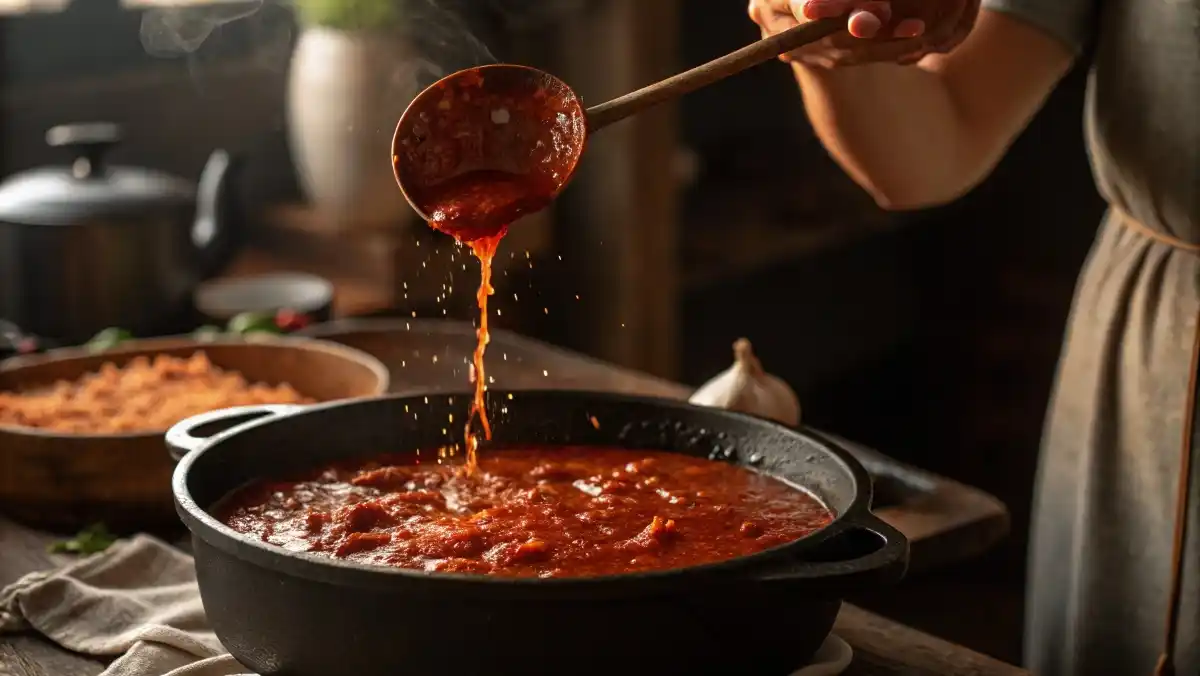My love affair with cooking really blossomed during the quiet, sometimes lonely days of the COVID-19 lockdown. It became my anchor. My neighbor, Fifi, a wonderful 62-year-old woman who’s always been the heart of our street, was isolating alone. So, I started cooking for her. At first, it was simple things—creative snacks and little bites of comfort. But one afternoon, I realized what she needed, what we all needed, was something more. Something that felt like a hug from the inside out. That’s when I decided to make her my classic spaghetti sauce.
The aroma of garlic, onions, and slow-simmered tomatoes filled my small home, a fragrant promise of warmth and care. When I brought that steaming container of rich, hearty ragu over to Fifi, I wasn’t just delivering a meal; I was sharing a piece of my heart. This guide is more than just an Italian spaghetti sauce recipe; it’s the culmination of countless hours spent perfecting a sauce that nourishes the body and the soul. We’ll walk through everything, from the essential spaghetti sauce ingredients to the secrets that make this the best homemade spaghetti sauce you’ll ever create.
Table of Contents
Why This Spaghetti Sauce Guide Is Special
In a world full of recipes, I wanted to create something that felt like a friend sharing a treasured secret. This isn’t about complicated techniques or fancy gadgets. It’s about love, patience, and the magic of simple ingredients. My philosophy has always been “simplicity with a special touch,” and this guide is the perfect example of that.
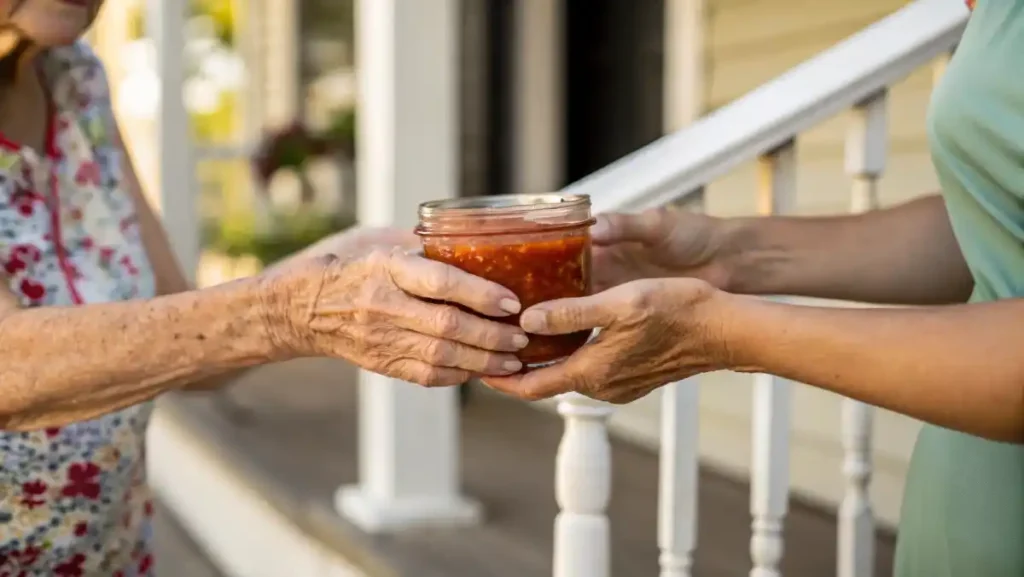
Here’s why this guide will become your go-to for the perfect spaghetti ragu sauce:
- Foolproof and Forgiving: I’ve designed this main recipe to be incredibly forgiving. Did you let it simmer a little too long? It’ll only taste richer. Don’t have fresh herbs? Dried will work beautifully. This is a recipe meant to build your confidence and deliver amazing results, no matter your skill level.
- The Ultimate Foundation for Creativity: We’ll start with my classic ragu spaghetti sauce, but I’ll also give you four incredible variations—from a quick weeknight marinara to a hearty vegetarian lentil ragu. Think of this guide as your launchpad for countless delicious meals.
- A Deep Dive into the “Why”: I won’t just tell you what to do; I’ll tell you why you’re doing it. You’ll learn why we brown the meat a certain way, why a splash of wine makes a difference, and why a low-and-slow simmer is the key to unlocking incredible depth of flavor. These are the little secrets that elevate your cooking from good to unforgettable.
- More Than a Recipe, It’s a Memory Maker: This is the sauce my daughter now requests for her birthday every year. It’s the meal I bring to friends who’ve just had a baby. It’s a recipe that creates moments. My hope is that it will do the same for you, becoming a part of your family’s story, one delicious bowl at a time.
The Heart of the Matter: Spaghetti Sauce Ingredients
The secret to any incredible dish starts with the ingredients. You don’t need the most expensive of everything, just good quality basics that you treat with care. Here’s what you’ll need for my classic sauce and its wonderful variations.
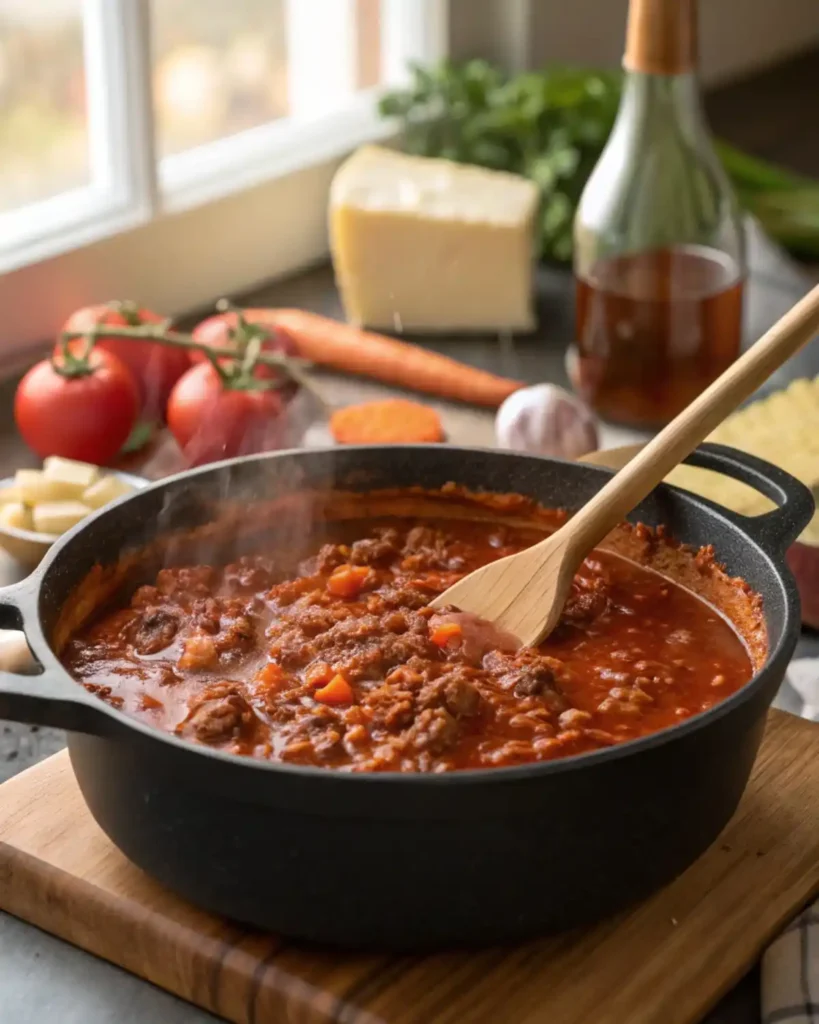
Recipe 1: Auntie Cynthia’s Classic Ragu Spaghetti Sauce
This is the original, the one that started it all. It’s rich, savory, and deeply comforting.
- The Meat: 1 lb (450g) ground meat blend (I love a mix of beef, pork, and veal for the best flavor and texture).
- The Aromatics: 1 large yellow onion (finely chopped), 4 cloves garlic (minced), 1 large carrot (finely grated), 1 celery stalk (finely chopped). The carrot adds a subtle, natural sweetness!
- The Fat: 2 tablespoons (30ml) olive oil.
- The Tomatoes: 1 large (28-ounce/794g) can of crushed tomatoes (San Marzano if you can find them!). Also, 1 small (6-ounce/170g) can of tomato paste.
- The Liquid: ½ cup (120ml) dry red wine, like a Merlot or Chianti (optional, but highly recommended for depth). 1 cup (240ml) beef or chicken broth.
- The Herbs & Spices: 1 teaspoon dried oregano, 1 teaspoon dried basil, 2 bay leaves, a pinch of red pepper flakes (for warmth, not heat), salt, and freshly ground black pepper to taste.
- The Special Touch: 1 Parmesan cheese rind (to simmer in the sauce).
Recipe 2: Quick Weeknight Marinara Sauce
For those busy nights when you still want a homemade touch.
- The Base: 2 tablespoons (30ml) olive oil, 3 cloves garlic (thinly sliced).
- The Tomatoes: 1 large (28-ounce/794g) can of crushed or puréed tomatoes.
- The Flavor: 1 teaspoon dried oregano, a large handful of fresh basil (torn at the end), a pinch of sugar (to balance acidity).
- Seasoning: Salt and black pepper to taste.
Recipe 3: Spicy Arrabbiata-Style Ragu
A fiery twist on the classic.
- Follow the Classic Ragu recipe, but increase the red pepper flakes to 1 full teaspoon (or more, if you dare!).
- A splash of the pasta’s starchy water at the end helps the sauce cling beautifully.
Recipe 4: Creamy Tomato & Sausage Sauce
Pure, decadent comfort.
- The Meat: 1 lb (450g) sweet or hot Italian sausage, casings removed.
- The Aromatics & Tomatoes: Follow the Classic Ragu recipe (you can omit the carrot if you like).
- The Creaminess: ½ cup (120ml) heavy cream, stirred in at the very end.
- The Green: A handful of fresh spinach or chopped kale, wilted in with the cream.
Recipe 5: Hearty Vegetarian Lentil Ragu
A wonderfully satisfying and healthy meat-free option.
- The Lentils: 1 cup (192g) brown or green lentils, rinsed.
- The Veggies: Double the carrot and celery from the classic recipe, and add 1 (8-ounce/225g) package of chopped mushrooms.
- The Liquid: Swap the beef broth for 3-4 cups (720-960ml) of vegetable broth.
- The Umami: 1 tablespoon of soy sauce or tamari adds a savory depth that mimics meat.
The Necessary Equipment
You don’t need a professional kitchen, just a few trusty tools. I believe in using what you have, but these items will make the process a breeze.
For All Sauces:
- A Heavy-Bottomed Pot or Dutch Oven: This is non-negotiable for me! A heavy bottom distributes heat evenly and prevents the sauce from scorching on the bottom during that long, slow simmer.
- A Good Wooden Spoon or Silicone Spatula: Perfect for scraping up all those delicious browned bits from the bottom of the pot (that’s where the flavor lives!).
- Measuring Cups and Spoons: For consistent results every time.
Auntie Cynthia’s Tip: If you’re thinking of investing in one piece of quality cookware, make it a Dutch oven. It will become the workhorse of your kitchen, perfect for everything from this spaghetti sauce to soups, stews, and even baking bread.
For Preparation:
- A Sharp Chef’s Knife: A sharp knife is a safe knife! It makes chopping all those aromatics a joy instead of a chore.
- A Large Cutting Board: Give yourself plenty of space to work.
- A Can Opener: An obvious but essential tool.
The Path to Perfection: Step-by-Step Instructions
Alright, let’s get cooking! Pour yourself a glass of something nice, put on some music, and let’s make some magic. We’ll walk through my Classic Ragu in detail, as it’s the foundation for the others.
1. Auntie Cynthia’s Classic Ragu Spaghetti Sauce
(Prep time: 15 minutes | Cook time: 2-3 hours)
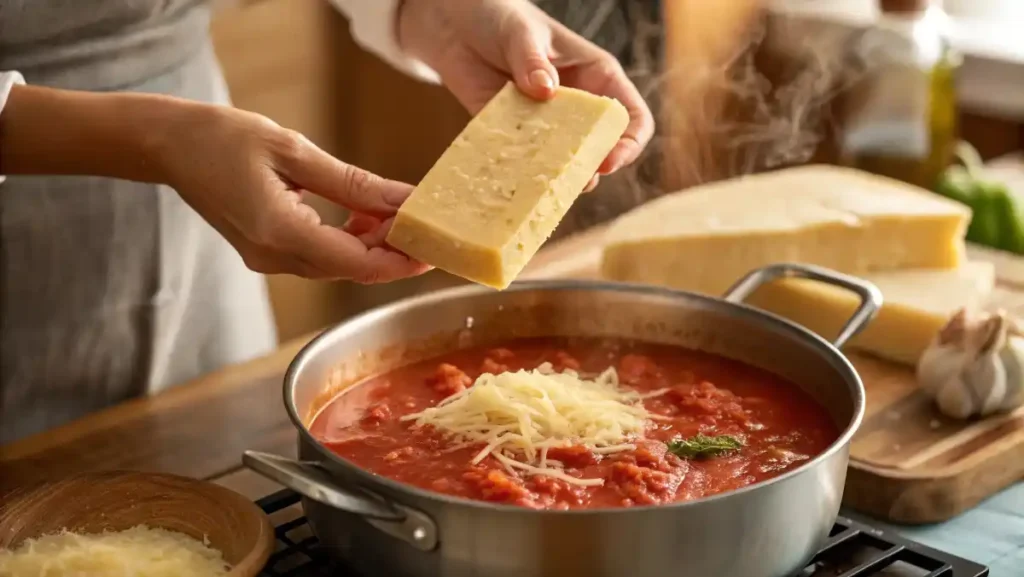
- Build Your Flavor Base: Heat the 2 tablespoons of olive oil in your Dutch oven over medium heat. Add the chopped onion, grated carrot, and chopped celery. Cook, stirring occasionally, for about 8-10 minutes, until the vegetables are soft and the onion is translucent. This step, called making a soffritto, is the soul of a great Italian spaghetti sauce recipe. Don’t rush it!
- Sear the Meat: Turn the heat up to medium-high. Add the ground meat blend to the pot. Use your wooden spoon to break it up. Let it cook, without stirring too much at first, until it’s deeply browned. This caramelization is pure flavor. Once browned, add the minced garlic and the pinch of red pepper flakes and cook for just one more minute until you can smell the garlic.
- The Magic of Deglazing: Pour in the ½ cup of red wine. As it bubbles, scrape the bottom of the pot with your wooden spoon to release all those wonderful browned bits. Let the wine cook down until it has mostly evaporated. If you’re skipping the wine, you can use the beef broth for this step.
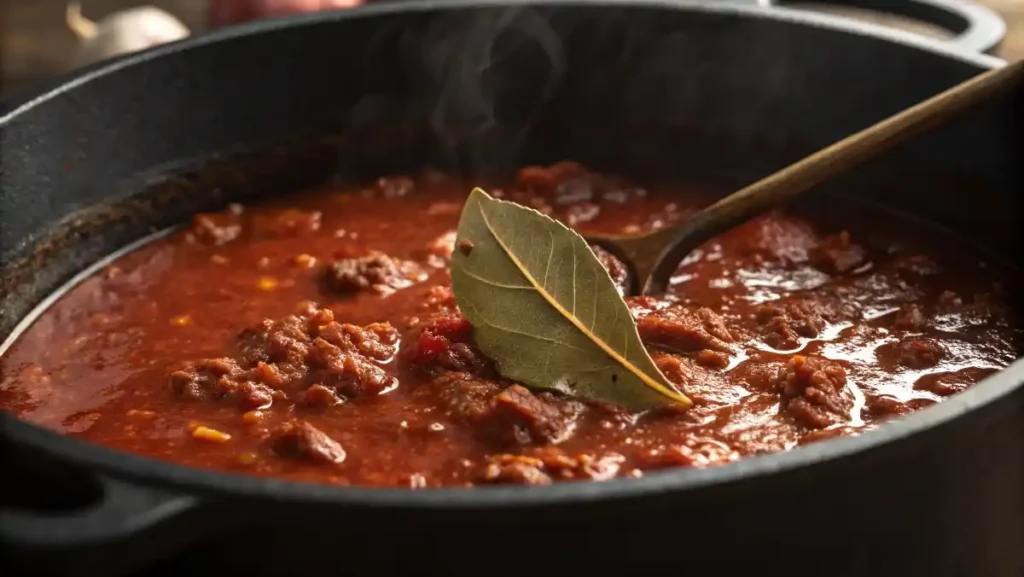
- Bring it all Together: Stir in the can of tomato paste and cook for 2 minutes. This deepens the tomato flavor. Now, add the crushed tomatoes, the 1 cup of broth, the dried oregano, dried basil, and the two bay leaves. And for my secret weapon: nestle the Parmesan rind right into the center of the sauce. Give everything a good stir.
- The Low and Slow Simmer: Bring the sauce to a gentle bubble, then reduce the heat to low, cover the pot partially (leaving a small crack for steam to escape), and let it simmer. For how long? At least 1.5 hours, but 2-3 hours is where the real magic happens. The flavors will meld, the sauce will thicken, and your house will smell incredible. Stir it every 20-30 minutes.
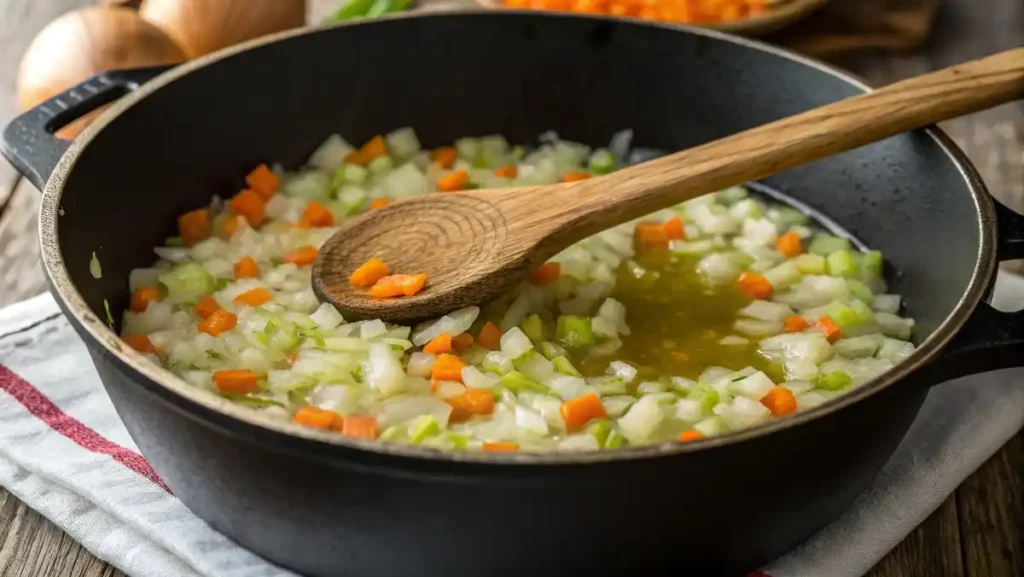
- The Finishing Touches: Before serving, remove the bay leaves and the Parmesan rind (it’s done its job!). Taste the sauce and season generously with salt and pepper. Sometimes it needs a little more of one or the other to really make the flavors pop.
2. Quick Weeknight Marinara Instructions
(Prep time: 5 minutes | Cook time: 25 minutes)
Sauté the sliced garlic in olive oil over medium-low heat until fragrant (don’t let it brown!). Pour in the crushed tomatoes, add oregano, sugar, salt, and pepper. Simmer for 20 minutes. Turn off the heat and stir in the fresh basil. Done!
3. Spicy Arrabbiata-Style Ragu Instructions
Follow the Classic Ragu recipe exactly, but when you add the garlic in Step 2, add 1 full teaspoon of red pepper flakes. This infuses the spice throughout the sauce.
4. Creamy Tomato & Sausage Sauce Instructions
Brown the Italian sausage in the Dutch oven first, breaking it up with a spoon. Remove the sausage with a slotted spoon and set it aside. Use the rendered sausage fat (add a little olive oil if needed) to cook your aromatics and proceed with the Classic Ragu recipe. Add the cooked sausage back to the pot with the tomatoes. At the very end, turn off the heat and stir in the ½ cup of heavy cream and wilted spinach.
5. Hearty Vegetarian Lentil Ragu Instructions
Sauté the onion, carrots, celery, and mushrooms until soft and the mushrooms have released their water. Proceed with the Classic Ragu recipe, but substitute the meat with the rinsed lentils. Use vegetable broth instead of beef broth, and add the soy sauce along with the tomatoes. This version will need at least 1.5 hours to ensure the lentils are tender and creamy. You may need to add a bit more broth as it simmers if it gets too thick.
Secrets to Success: Your Master Tips
Over the years, I’ve learned a few little things that make a big difference. These are my go-to tips for ensuring your spaghetti sauce is spectacular every single time.
- Patience is an Ingredient: The most important tip I can give you is to not rush the simmer. A quick sauce is fine, but a slow-simmered ragu spaghetti sauce is transcendent. The long cook time breaks down the meat and vegetables, creating a velvety texture and a depth of flavor you just can’t get any other way.
- The Power of the Parmesan Rind: Never, ever throw away the Parmesan rind! It’s a principle I apply to all my cooking: using every last bit of what we have. If you’re looking for other tips for reducing food waste at home, the EPA has an excellent guide.
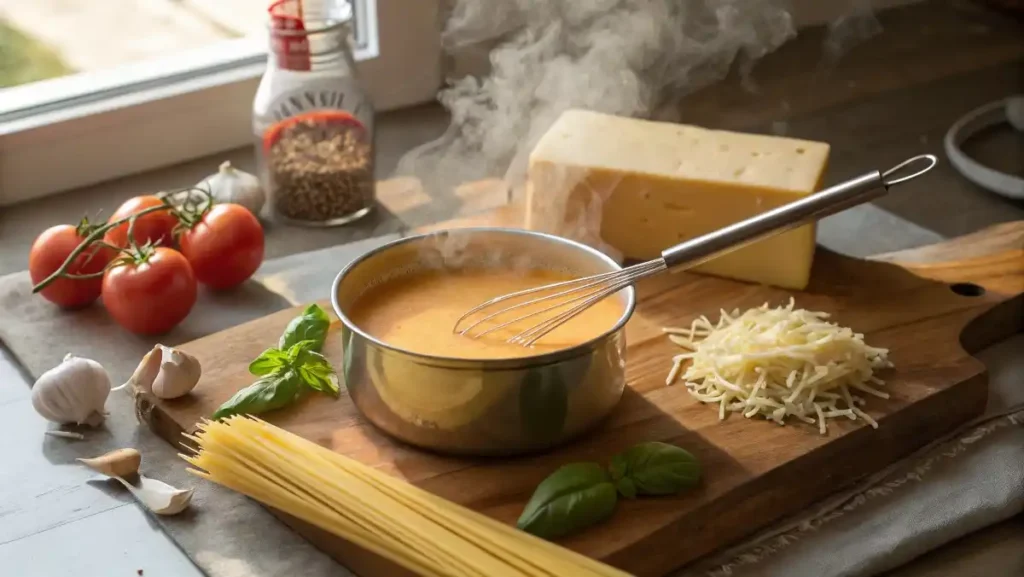
- Balance with Sweetness and Fat: Tomatoes can be quite acidic. The finely grated carrot adds a natural sweetness to counteract this. If your sauce still tastes a bit sharp, a tiny pinch of sugar can work wonders. Similarly, finishing the sauce with a small pat of butter or a drizzle of good olive oil off the heat can round out the flavors and give it a beautiful, glossy finish.
- Don’t Forget to Salt Your Pasta Water: This is crucial! Your pasta should be seasoned from the inside out. The water should taste like the sea. This ensures that your final dish isn’t a flavorful sauce on bland pasta, but a perfectly integrated plate of deliciousness.
Variations and Customization: Make It Your Own
The best part about a foundational recipe like this is making it your own. My daughter and I love to experiment! Here are some ideas to get you started, broken down by recipe.
For the Classic Ragu:
- Meat Medley: Try different ground meats like lamb for a gamier flavor or even ground chicken or turkey for a lighter version.
- Hidden Veggies: This sauce is the perfect vehicle for sneaking in extra vegetables for picky eaters. Finely grated zucchini or minced mushrooms disappear into the sauce, adding nutrients and moisture.
- Herbaceous Boost: If you have fresh herbs, use them! Add a few sprigs of fresh thyme or rosemary along with the bay leaves and stir in chopped fresh basil or parsley at the end.
For the Quick Marinara:
- Puttanesca Style: Add a tablespoon of capers and a handful of chopped Kalamata olives for a briny, punchy flavor. A few anchovy fillets dissolved in the oil at the beginning adds incredible umami.
- Roasted Garlic Twist: For a deeper, sweeter garlic flavor, roast a whole head of garlic first, squeeze out the soft cloves, and mash them into the sauce.
For the Creamy Sausage Sauce:
- Spice it Up: Use hot Italian sausage and add a pinch of smoked paprika for a smoky, spicy kick.
- Cheese Please: Stir in a half-cup of grated Parmesan or Pecorino Romano along with the heavy cream for an extra cheesy, savory sauce.
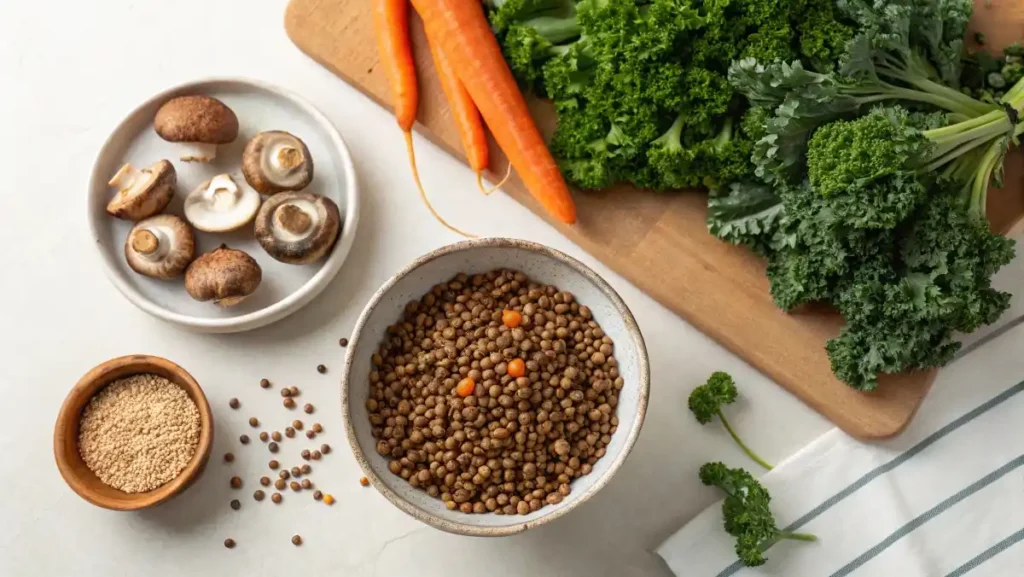
Inclusive Options for Every Table
- Gluten-Free: The sauces are all naturally gluten-free! Simply serve them over your favorite gluten-free pasta or even zucchini noodles (“zoodles”), spaghetti squash, or creamy polenta.
- Dairy-Free: For the creamy sausage sauce, you can substitute the heavy cream with a full-fat coconut milk or a dairy-free cream alternative. To get that rich flavor from the Parmesan rind, try adding a tablespoon of nutritional yeast at the end.
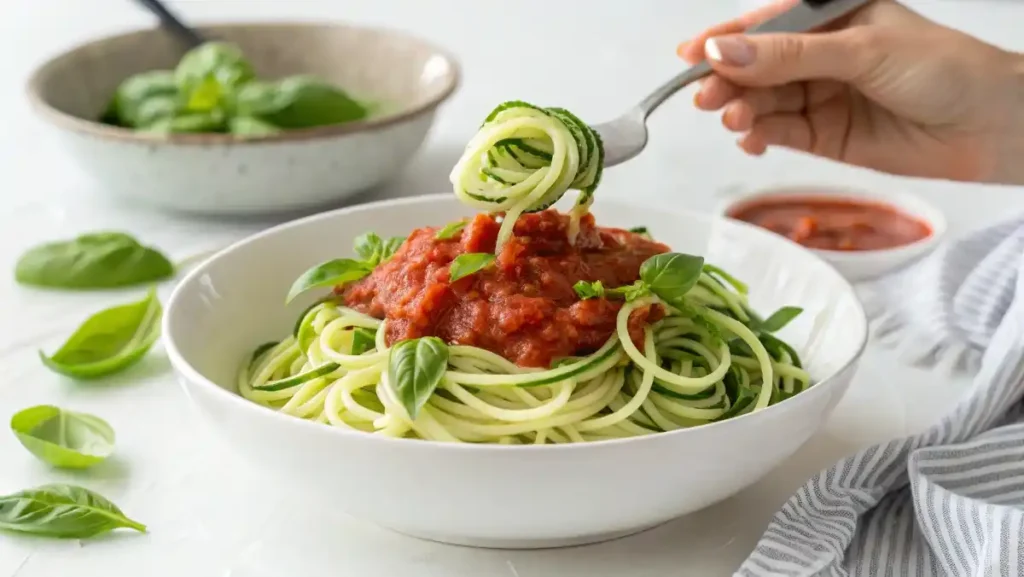
Serving Suggestions and Pairings
Presentation is the final act of love! A great sauce deserves a beautiful plate.
- Classic Ragu: This rich sauce begs for a wide, flat pasta like pappardelle or tagliatelle to catch all the meaty bits. Serve with a generous dollop of fresh ricotta cheese on top and plenty of grated Parmesan.
- Quick Marinara: A classic pairing for a classic sauce. Serve with traditional spaghetti and garnish with lots of fresh basil leaves and a drizzle of extra-virgin olive oil.
- Spicy Arrabbiata: Penne is the traditional choice here. The hollow tubes are perfect for trapping the spicy sauce.
- Creamy Sausage: A short, sturdy pasta like rigatoni or ziti works best, as the creamy sauce gets right inside.
- Vegetarian Lentil Ragu: This is wonderful with whole-wheat pasta or served over a bed of soft polenta, almost like a stew.
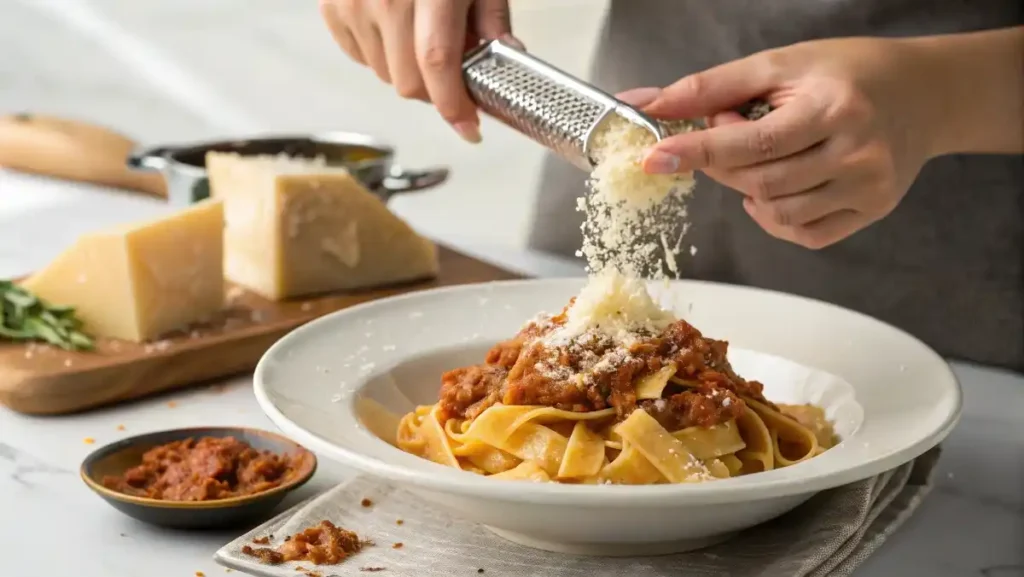
No matter which sauce you choose, a simple green salad with a bright vinaigrette and a loaf of crusty garlic bread are the perfect companions.
Storage: For Now and for Later
This spaghetti sauce is a gift that keeps on giving. In fact, like many stews and braises, it often tastes even better the next day!
- Refrigerating: Let the sauce cool completely, then transfer it to an airtight container. It will keep beautifully in the refrigerator for up to 5 days.
- Freezing: This sauce freezes like a dream! Let it cool completely, then portion it into freezer-safe bags or containers. Be sure to label them with the date! It will last for up to 3 months in the freezer. To reheat, let it thaw overnight in the fridge and then gently warm it on the stovetop.
A Note on Nutritional Information
Please remember, I’m a home cook sharing my family’s recipes, not a registered dietitian. The following information is an estimate for the Classic Ragu Spaghetti Sauce, calculated using an online tool. It’s based on the recipe making about 8 servings. The actual values can vary based on the specific ingredients you use.
Estimated Nutrition for 1 Serving of Classic Ragu (Sauce Only):
- Calories: approx. 280 kcal
- Protein: 18g
- Fat: 16g
- Carbohydrates: 14g
- Fiber: 4g
- Sugar: 8g
Health Considerations:
This recipe is wonderfully adaptable to your dietary needs. To lower the fat content, you can use leaner ground beef (90/10) or ground turkey, and be sure to drain any excess fat after browning. To control the sodium, use low-sodium broth and canned tomatoes, and adjust the salt yourself. The best way to boost the nutrition is to add even more vegetables—there’s no limit!
Don’t Just Take My Word for It: What the Community Is Saying
I’ve shared this recipe with friends, neighbors, and online, and the response always warms my heart. It’s proof that good food connects us all.

“I’m a total beginner in the kitchen, and I was so intimidated to make sauce from scratch. Auntie Cynthia’s recipe was a game-changer! The steps were so clear, and it came out perfectly. My family thought I was a professional chef!” – Maria P., Ohio
“This is the only spaghetti sauce my kids will eat now. They love helping me make it, especially grating the carrot. The tips, like using the Parmesan rind, made all the difference. Thank you, Cynthia!” – David L., North Carolina
“I made the classic ragu for a dinner party, and it was a massive hit. It tasted like it had been simmering for days in an Italian nonna’s kitchen. I’ve already frozen a batch for an easy weeknight meal. This is a forever recipe.” – Samantha R., California
Frequently Asked Questions (FAQ)
Here are answers to a few questions I get all the time.
Can I make this spaghetti sauce in a slow cooker or Crock-Pot?
Absolutely! That’s a fantastic question, and this sauce is a dream in a slow cooker. The secret is to still do the most important work on the stovetop first. Follow steps 1 through 3 of the main recipe—sautéing your aromatics, browning the meat, and deglazing the pan. This builds the deep, caramelized flavors that a slow cooker can’t create on its own. Then, transfer everything to your slow cooker, add the rest of the ingredients, stir, and let it work its magic on low for 6-8 hours or on high for 3-4 hours. Your house will smell incredible all day!
Why does my tomato sauce sometimes taste bitter or too acidic?
Oh, that’s such a common frustration, but don’t you worry, it’s an easy fix! That sharp taste usually comes from the natural acidity of the tomatoes. In my classic recipe, the finely grated carrot is my first line of defense, as its natural sugars help balance everything out. If it still tastes a little sharp at the end, a tiny pinch of sugar (start with just ¼ teaspoon) can work wonders. My other secret? Fat. Stirring in a small pat of butter or a splash of heavy cream right at the end will smooth out any harsh acidic edges beautifully.
How do I thicken a runny spaghetti sauce?
It happens to all of us! A runny sauce is just a sauce that isn’t quite finished yet. The very best way to thicken it is with time. Simply remove the lid from your pot, turn the heat up just a bit to maintain a gentle simmer, and let the excess water evaporate. Stir it every so often until it reaches the consistency you love. If you’re in a real hurry, you can stir in an extra tablespoon or two of tomato paste, which will thicken it and deepen the tomato flavor at the same time.
How long is spaghetti sauce good for in the fridge?
This sauce is a gift that keeps on giving, and I think it tastes even better on day two! Once it has cooled down completely, store your spaghetti sauce in an airtight container in the refrigerator. It will stay perfectly fresh and delicious for a good 4 to 5 days. It’s one of my favorite things to make on a Sunday for easy, wonderful meals during a busy week.
Can I adapt this sauce to be creamy like an Alfredo, or give it a spicy kick?
Oh, what a fun question! I absolutely love it when you all get creative. For a spicy kick, my Arrabbiata-Style Ragu is a great start, but you can absolutely add a few dashes of your favorite Hot sauce at the end for a different kind of vinegary heat. Now, for a creamy twist, while this recipe won’t become a true Alfredo sauce, you can create a gorgeous “Rosa” (pink) sauce. Simply stir in about a half-cup of heavy cream, or even a simple, smooth Cheese sauce, at the very end of cooking. Just heat it gently and don’t let it boil. It’s a wonderful way to blend two classic ideas into one delicious dish
Why doesn’t my sauce stick to the spaghetti?
This is a classic kitchen puzzle, but the solution is my favorite “restaurant secret!” There are two main culprits. First, never rinse your pasta after you drain it! That starchy film on the outside is like a natural glue that helps the sauce cling. Second, for the best result, undercook your pasta by about one minute. Drain it (but save a cup of that starchy pasta water!), and add the slightly undercooked pasta directly to the pot of sauce. Stir it all together over low heat for a minute or two, adding a splash of that “liquid gold” pasta water to help create a creamy, perfectly coated dish.
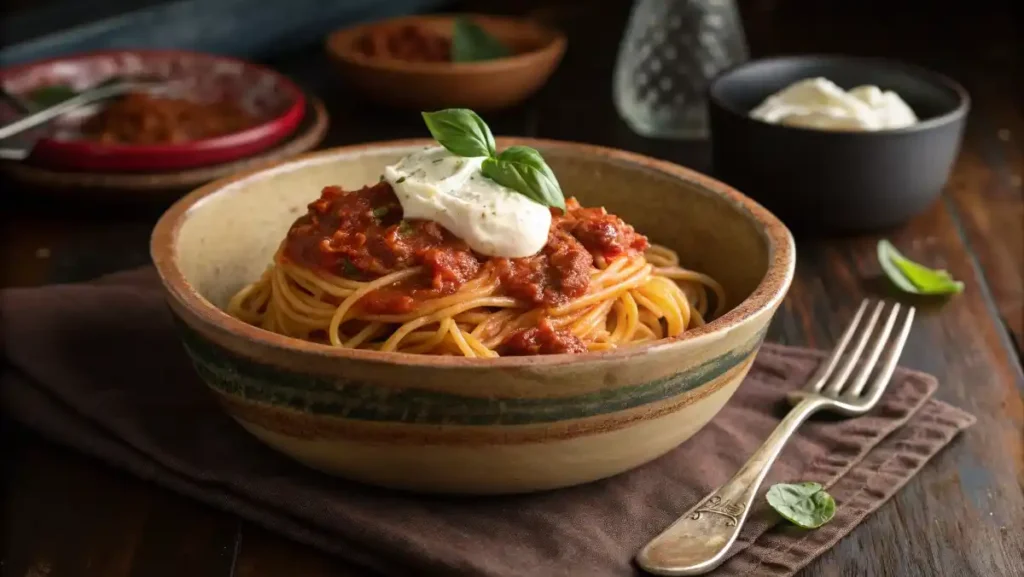
A Final Word from My Kitchen to Yours
We’ve journeyed from a simple pot to a complex, soul-soothing sauce. We’ve chopped, simmered, and seasoned. But more than that, we’ve created something with our own two hands that can bring joy and comfort to the people we love. That, to me, is the entire point. This best homemade spaghetti sauce isn’t just a recipe; it’s a vehicle for love. It’s a quiet weeknight meal with your kids, a celebratory dinner with friends, a comforting gift for a neighbor in need.
Remember my philosophy: “The best bites are those shared with the people you love.” So please, take this guide, make it your own, and share it. Fill your home with its wonderful aroma and create your own memories around the table.
I would be absolutely thrilled to hear how it turns out for you. Drop a comment below to share your stories, your variations, or any questions you might have.
With love and a happy kitchen,
Auntie Cynthia
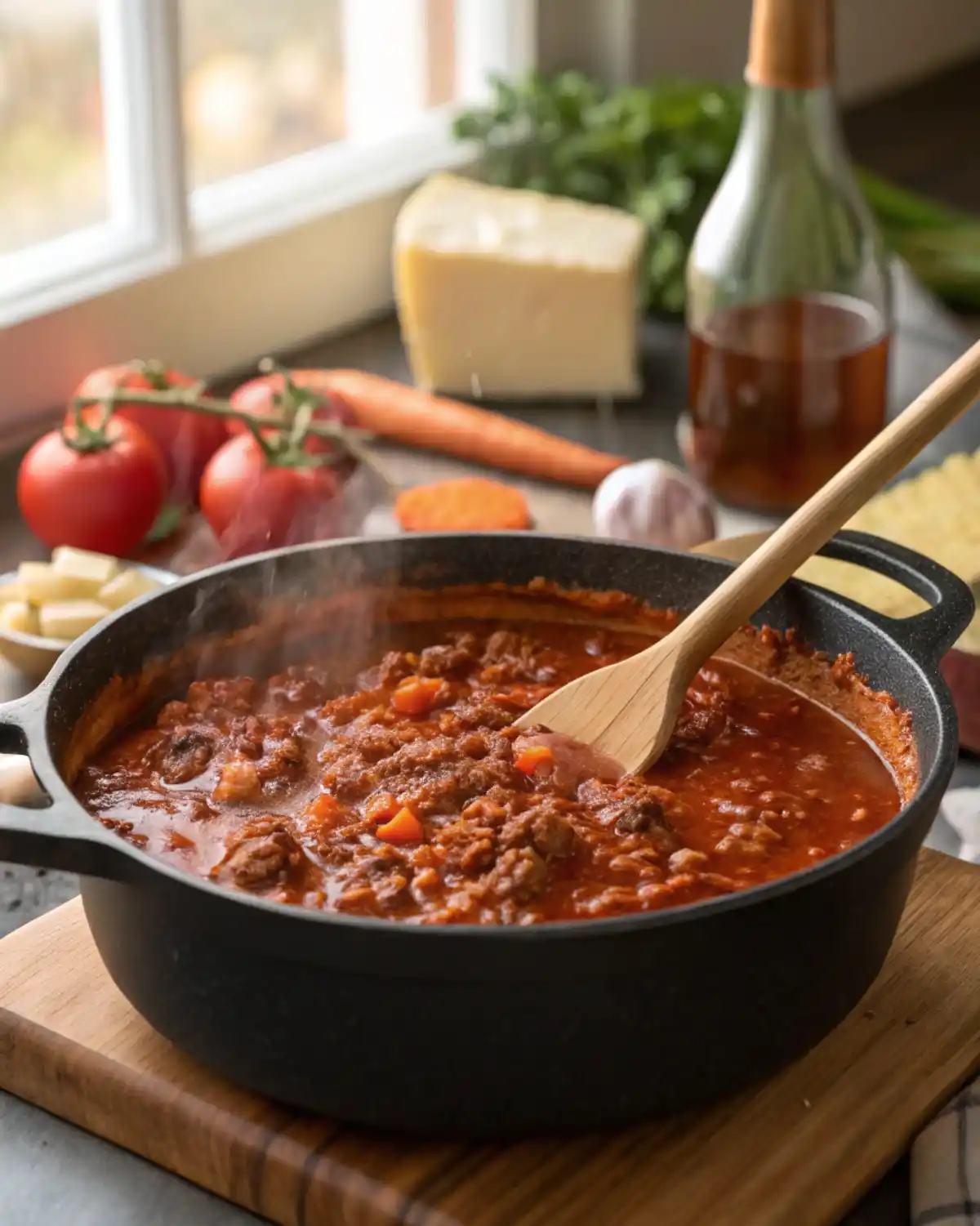
Auntie Cynthia’s Classic Ragu Spaghetti Sauce
Ingredients
Equipment
Method
- Heat the 2 tablespoons of olive oil in your Dutch oven over medium heat. Add the chopped onion, grated carrot, and chopped celery. Cook, stirring occasionally, for about 8-10 minutes, until the vegetables are soft and the onion is translucent.
- Turn the heat up to medium-high. Add the ground meat blend to the pot. Use your wooden spoon to break it up. Let it cook, without stirring too much at first, until it’s deeply browned. Once browned, add the minced garlic and the pinch of red pepper flakes and cook for just one more minute until you can smell the garlic.
- Pour in the ½ cup of red wine. As it bubbles, scrape the bottom of the pot with your wooden spoon to release all those wonderful browned bits. Let the wine cook down until it has mostly evaporated. If you’re skipping the wine, you can use the beef broth for this step.
- Stir in the can of tomato paste and cook for 2 minutes. Now, add the crushed tomatoes, the 1 cup of broth, the dried oregano, dried basil, and the two bay leaves. Nestle the Parmesan rind into the sauce. Give everything a good stir.
- Bring the sauce to a gentle bubble, then reduce the heat to low, cover the pot partially, and let it simmer for at least 1.5 hours, ideally 2-3 hours. Stir every 20-30 minutes.
- Before serving, remove the bay leaves and the Parmesan rind. Taste the sauce and season with salt and pepper as needed.
